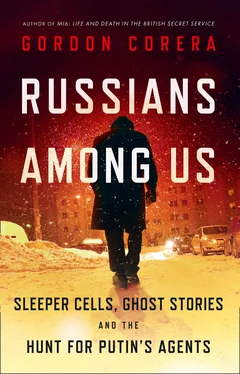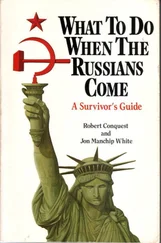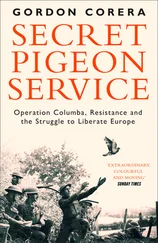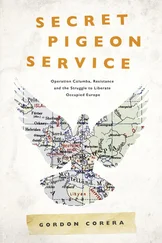POTEYEV WAS BORN on March 7, 1952, in the Brest region of Belarus, in what was then the Soviet Union. His father, Nikolai Poteyev, had commanded T-34 tanks with distinction in World War II, earning the title “Hero of the Soviet Union” for his role in battle in the Baltic front in September 1944, but died when Alexander was twenty. His son followed him into the army and in 1975 he joined the KGB, first serving in Minsk and then from 1978 in Moscow, though not yet as a spy. During these years he met and married Marina and they would have a daughter and then a son.
In 1979, Poteyev went on the Advanced Course for Officers (KUOS). The name was misleading. It was better known as “the school for saboteurs.” This was the KGB’s elite paramilitary training for those destined for either irregular combat or stay-behind and sabotage roles in the event of World War III and other conflicts. It came under the wing of Directorate S’s Department 8, which carried out “special operations.” These were unique roles that combined the ability to work undercover for long periods as a spy with high-end military training. Poteyev would soon get his chance to put those skills into action.
On Christmas Eve 1979, Soviet troops were ordered into Afghanistan to quell a growing insurgency and topple a leader insufficiently pliant to Moscow’s orders. Directorate S’s Department 8 had already tried to assassinate the Afghan leader by sending an illegal documented as an Afghan to get a job as a cook and poison his fruit juice. But the Afghan leader was suspicious enough to carefully mix his drinks. So Moscow resorted to an all-out assault on the presidential palace led by Directorate S and GRU special forces (the “illegal” cook had to hide to avoid being shot by his compatriots during the raid). Poteyev was sent early to Afghanistan as one of the Directorate S “Zenit” teams. The invasion set the scene for a brutal struggle as a bloody insurgency by mujahideen fighters gathered strength. This was fueled by weapons and money sent by Islamic states and the CIA (led, in part, by Milton Bearden), who saw it as a chance to give their Soviet enemy a bloody nose. It was a savage and dirty fight—the Soviet Union’s version of Vietnam—from which many young men returned in body bags. Poteyev was on the front lines. One of the only photos of him is as part of Zenit—a young-looking figure in fatigues with a blank expression. One KGB colleague from those days simply remembers Poteyev as someone who liked to drink and who had a good sense of humor.
Poteyev next served in “Cascade,” a new task force formed to fight guerrilla warfare. Like a US special forces team in Afghanistan in later years, their job was to seek intelligence and use it to hunt for the enemy and its agents in the towns and countryside. This included using illegals who could pose as fake mujahideen to lure others into ambushes. Out of Cascade, Yuri Drozdov, the head of Directorate S, would form a new special forces unit for covert action behind enemy lines called Vympel. The intervention in Afghanistan proved disastrous for the Soviet Union, but for Poteyev, it was a stepping-stone. He was awarded the Red Star and other decorations before being selected to attend the Red Banner Institute to be trained as an intelligence officer (at the same time as Bezrukov and Vavilova were being trained as illegals). Poteyev must have been effective as a spy, because in 1995 he was sent on a plum posting to New York. He arrived as a second secretary at the Russian mission to the UN and stayed through 1999. The Russian ambassador to the UN at the time was Sergey Lavrov—later Russia’s long-serving foreign minister.
When he arrived every morning at the mission on 67th Street, Poteyev would take an elevator up to the eighth floor. In the lobby were two steel doors. There were no signs, but one was for the rezidentura —the intelligence station—of the GRU, military intelligence. The other door led to the SVR’s rezidentura , where Poteyev worked. Officers would pull out a small piece of metal and touch the head of a screw in the lower right corner of a brass plate by the door. That would complete an electric circuit—sometimes giving the person a tiny jolt—and the bolt would slide open. Behind the door was a cloakroom. Under the watchful eye of a camera, everyone would have to leave their coats as well as any electronic items in a locker to make sure nothing could be smuggled in or out. Next came another solid steel door with a numeric lock that required a code. Beyond it, the GRU and SVR offices were known as “submarines” since they were tightly enclosed to prevent FBI surveillance. Special teams had been flown from Moscow to create the structure, which sat on top of springs, creating a space from the main building structure to prevent cameras and listening devices being inserted. The walls were several inches thick and coated with wires that vibrated to emit a white noise. There were dedicated electrical and ventilation systems. On the SVR side there was a corridor ninety feet long with offices on either side. These were given over to the different “Lines” with different roles—one carried out technical interception; another, Line X, looked for technological secrets; VKR studied American intelligence; PR sought political contacts and information. Poteyev would walk into an office in the far corner of the floor.
Poteyev was a Line N officer. These are the spies under diplomatic cover whose job is to support the work of Directorate S illegals. Sometimes this can mean doing the legwork to establish a false identity—they were the ones traipsing around graveyards and church registries looking for names of dead children. They would also be in charge of getting hold of documents or visa applications so that Moscow Center can produce convincing forgeries. It could also mean supporting illegals directly. The whole point of illegals is that they do not appear Russian, so direct contact with anyone from the embassy is kept to an absolute minimum. But there might be moments when some kind of indirect contact is required—it could be an emergency signal left somewhere if something is going wrong—that might require a Line N officer checking every week to make sure there is not a chalk mark at a particular place. Or there might be documents or cash to leave in a dead drop for an illegal to pick up. Line N officers might also pass off new documents to an illegal transiting through their country or they might meet an illegal in a third country (often Mexico or somewhere in Latin America for US-based illegals).
There were 60 SVR officers based in New York in the late 1990s. They were running about 150 sources. As well as the mission, there was the Russian Consulate at East 91st Street, close to Central Park. Poteyev would likely have lived in a large, dingy tower on West 255th Street, in Riverdale in the Bronx, that was the residential compound. The rooms were small and smelly, with plenty of cockroaches. There was a small bar with cheap liquor and cigarettes, even a sauna, a swimming pool, and a school so that the Russians were not too tempted by the bright lights and enticements of the city on their doorstep. Surrounded by a chain security fence, the compound had been built on a steep hill. This allowed antennas to be placed that could intercept communications, and on the nineteenth floor, Line VKR—foreign counterintelligence—ran a system called “Post Impulse,” which tracked FBI signals. If they saw several FBI signals in the vicinity of one of their SVR officers they knew they might be under surveillance. In New York, the top mission for the SVR spies was penetrating the US mission to the UN; next was the missions of other permanent members of the Security Council—the United Kingdom, France, and China, followed by Germany and Japan and other NATO countries. Next were New York financial institutions, then the universities like New York University and Columbia, and finally Russian immigrant groups and foreign journalists.
Читать дальше












